ASUS is kicking off 2025 with a plethora of launches from every one of its business units. While graphics will be at the forefront after the official RTX 50 launch, there are also a lot of new products coming from the monitor, motherboard, power supply and cooling departments. We'll start with the ‘crown jewels' and a graphics card that needs close to 600 watts in order to perform.
Having a single card that can draw up to 575 watts, tells you just how much power these things will consume and deliver. With 21,760 CUDA cores and 32GB of GDDR7 memory connected on a 512-bit bus, the performance expectation level from the RTX5090 is incredibly high. It will land with a price point expected to be close to $2,000 in the States, which (with today’s homogenised economy) probably means £2,000 in the UK and €2,000 in Europe. The first version we saw (top ROG SKU) weighed in over 3KG and it was just over 3.5 slots wide, however, the pricing on something like the TUF Gaming version is likely to be more competitive.
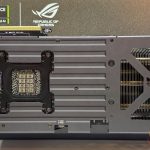
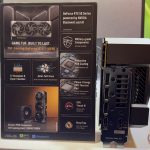
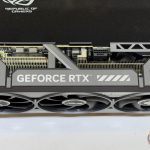
The RTX5080 models will focus on a core spec that includes 10,752 CUDA cores and 16GB of GDDR7 that links together on a 256-bit bus – with ASUS confirming that its price will be around $999. The fact that the card has dual-bios modes (performance and quiet) probably tells you something about how it will be ‘at full pelt'.
ASUS also confirmed that its RTX 5070Ti will be around $749 at the end of Q1. This will offer 8960 CUDA Cores and 16GB of GDDR7 on a 256-bit bus. Lastly, there will be a more affordable RTX 5070 with 6144 CUDA Cores and 12GB of GDDR7 on a 192-bit memory interface on the shelves soon enough.

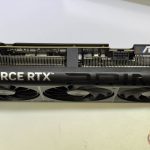
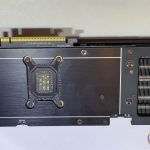
As always, there will be multiple versions at different prices and the street pricing will likely change throughout Q1 and Q2 – as we anticipate demand will out-strip availability by some amount.
Given that laptop manufacturers are already talking about models with 5050/5060 GPUs, we anticipate the the desktop versions could well be on the shelves before Computex in May.
ASUS will also bring special versions of their cards to market including the ROG Astral (which will be positioned just under the top of the range ROG Matrix). Expect to see 80amp MOSFETS and a bespoke cooling solution that includes an arrangement of 4x fans – one of which pulls cool air in, while the other 3 drive hot air out.
If you're concerned about just how much PSU you will need for your new RTX50 card, ASUS has been working on a guide.
The increased weight of the new cards will certainly be a concern for system integrators and it seems that either (a) shipping the graphic card ‘outside’ of the completed PC – for installation on site – or (b) moving to liquid cooling, will be the best option. ASUS is already close to delivering its liquid cooled versions (ROG Astral LQ) – with a 360mm radiator that’s 38mm deep – giving it the ability to increase heat dissipation by more than 50% compare to other options.
The TUF Gaming version of the RTX5080 will operate on around 360 watts and its physical size of 348x146x72 mm will take up around 3.6 slots. Here the focus has been on increasing the longevity of the cooling system – with bearings that can last up to twice as long as fans in the current series. It will also come with 12 heatpipes – up from 8 on previous generations. It also has Axial-Tech fans (that ASUS claims can push 23% more air than older designs) and a phase-change thermal pad that it hopes will increase GPU longevity.
The physical size of the new top-end cards immediately brings up more questions. Having been shown 2,500w and 3,000w power supplies recently (with multiple 600w connectors) that can only mean that someone out there is thinking about combining FOUR RTX5090 cards into a single system. Probably less so for gaming (given the issues with getting timely Quad SLi drivers in the past), but certainly for high-end, localised Ai applications. We’re not sure what anyone would be doing with 87,040 CUDA cores in a single desktop machine, but there’s bound to be an application that needs all that processing power. KitGuru has had exclusive talks with some of the most experienced engineers in Taiwan, and we’ve been told that work is being done to create a version of the RTX5090 that will fit into 2 slots – using the physical size of the RTX5070 as a ‘guide’. That idea should work, given that the mobile versions of the new RTX50 cards are looking to be in mass-market production before the end of Q1 as well. While serious/rich gamers will want the full-sized RTX5090 running at full pelt, Ai researchers and engineering types will probably want the ‘full-phat’ 87,040 CUDA cores option – even if that means that they will be running their GPUs under-clocked and under-volted.
As we’ve mentioned previously, we were expecting a lot more news about RDNA 4 at CES. ASUS certainly has Radeon RX 9000 series options in both the TUF and Prime model line-ups, but full details are still to follow.
ASUS told us that one trend it has noticed recently, is a small move away from RGB. It is considering offering ‘no nonsense’ models with clean designs and effective cooling – as well as more competitive pricing. If you’re working in a creative environment, it’s probably easier to get work to fund a home PC that doesn’t light up like a Christmas tree – and any savings, these days, are very welcome.
ASUS has clearly been working on its BTF (reverse cable boards), with a new BTF2.0 standard. They have buy-in from Nvidia and are waiting on AMD. Essentially, it seems that the alternative connection system would allow ASUS to feed up to 1,000 watts through a single connector, according to the manufacturer.
The combination of ASUS building BTF motherboards with rear-cabling designs, along with the GC-HPWR (Graphics Card – High Power) connector capable of supplying up to 1000 watts, makes sense in the context of designing systems that handle extremely high power demands efficiently. The BTF design should allow better airflow and organisation for such high-performance components, while the GC-HPWR connector would ensure enough power is delivered to handle the extreme power draw of modern GPUs.
Many of the new products we saw will also be available in white, with up to 25% of new system builds apparently now favouring a ‘lighter colour scheme’. That's also true for what ASUS believes is the world's first Ai Gaming Router with built in NPU (Neural Processing Unit). The ROG Raptor GT-BE19000FII seems to have a top speed of 19Gbps, can support up to 5 SSIDs and offers triple level security. It will automatically prioritise gaming devices and ‘understands' more than 3,000 games. The upshot? Around 34% less latency and an “Unrivalled gaming experience”, according to ASUS.

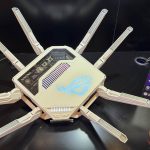
Getting peak performance from a new RTX50 card will mean that the GPU needs to be tuned effectively. GPU Tweek III will be available and is now being updated at least once every two months. ASUS claims that the VF Tuner function is now better – and that they will also offer a full range of intelligent profiles for game optimisation through ‘Profile Connect’. This also allows you to monitor everything on your phone through a special app. Following on from a lot of customer requests, ASUS told us that it is working to include Ai in every aspect of control – allowing anyone to get the maximum safe performance from their new hardware.
Having a blisteringly fast graphic card is always attractive, but ASUS has been working on another important area that can bottleneck performance – and that is the connection mechanism for memory. They have been working on new designs and have managed to create (a) greater localised clamping pressure alongside (b) a reduced trace. Instead of a 6.95mm journey for data to move from memory to a board – that charge now only needs to traverse 4.23mm. On a human scale, these distances seem miniscule, but when you’re talking about passing data at Gbps, the longer the journey – the more likely that you will get a ‘drift’ on the frame – resulting on a need to retransmit.
Running everything so fast, will generate a lot of heat, which is fine – as long as you have sufficient cooling to pull the heat energy out of the system. For this, ASUS has partnered with Asetek on the Emma Gen 8 V2. The specialists that we spoke to, said that this could be the best AIO ever for this area. It has a new pump, magnetic connection system and 60Hz refresh screen that should deliver really solid images. There is also a white version coming in 2025. The affordable ‘ASUS Prime LC 360 ARGB’ version will be landing very soon – with the new top-end product following close behind.
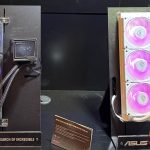

We’ve covered a lot on the upcoming graphic cards and, in doing so, touched on power supplies.
At Computex 2018, we first saw the original Thor power supply – created in close collaboration with Seasonic – and it was a winning design. It was designed to offer high power delivery, especially for high-performance gaming PCs and workstations – while featuring an eye-catching OLED display that could show real-time power consumption. It was aimed at enthusiasts, with models offering up to 1200W of power. The collaboration ensured that the PSU delivered high efficiency and reliability – essential for powering demanding components like top-spec graphics cards.
We are now onto a 3rd series and the ROG Thor III now comes in 1,000w, 1,200w and 1,600w versions. These PSUs will benefit from two unique features: ‘GPU-First' patented intelligent voltage stabilizer (IVS), that will enhance voltage delivery to your graphics card by up to 45% and the use of GaN MOSFET – to help deliver up to 30% more power in an efficient way.
Traditionally, systems would prioritise CPU power, but with this latest model, ASUS is now putting the GPU at the top of the priorities list. The feature is called ‘GPU First’, and it has a special cable to allow detailed voltage information to be shared with your system. The little purple connector instantly detects a voltage drop and it will prioritise keeping your graphics card fed – ahead of your CPU.
ASUS’ magnetically attachable OLED displays look like fun, but it’s unclear how many people will ever get to see that far inside your chassis. Still, the fact that they can be attached in a number of orientations does mean that your PSU can now be an integral part of a colourful system build.
With a 3,000 watt PSU on the horizon from ASUS – and the VGA team considering the creation of a two-slot ‘5070-sized' 5090 card for Ai applications – it looks like there will be ample hardware for any useful ‘desktop Ai apps' that come through in the next 6-12 months. Phison already has something in this area, so other companies are likely to follow if there is an app worthy of all that compute power.
While the VGA team has been pushing hard for the January launch of the RTX50 series, the motherboard team has been working on its own innovations – especially when it comes to ProArt. We learned that around 20% of the Pro-Art system/hardware that ASUS sell to creators, is for the Mini ITX form factor. ASUS had a pretty small system on display, complete with an RTX5080 graphic card inside, under the label ROG NUC 2025. It will take up to a Core Ultra 9 CPU, 96GB of DDR5 running at 6400MHz, in a tool-less access chassis. We shot it with a regular smartphone leaning against it – to give a sense of scale. Heat would be a concern, but ASUS seems to be using a laptop GPU, triple fans and a dual vapour chamber – so is claiming ‘silent cooling'.
Off the rack hardware won’t work for all professionals, which was the original motivation behind ProArt. The PA27JCV 5K screen we recently reviewed from ASUS is testament to that – with incredible colour accuracy and pin-sharp images.
The new ProArt monitors have built in processors that allow the screens to self-calibrate. The top of the range 8K ProArt monitors will support 4,032 backlit zones. The new ProArt monitors (PA32KCX, PA32UCE and PA27UCGE) now come equipped with a built-in colorimeter for self-calibration – ensuring long-term colour accuracy. The top of the range ProArt 8K monitor that we saw at Computex will support 4032-zone local dimming mini LED backlight – which should ensure exceptional colour contrast and accurate reproduction of HDR content. The ROG monitor team are working on their own innovations. Right now, that means a pixel density of 160ppi, but there is a possibility that this will move to 200ppi in the near future.
ROG took this opportunity to launch the 27″ 4K QD-OLED gaming monitor, the ROG Swift OLED PG27UCDM, which offers a 240Hz refresh rate. They believe that this is the world’s first 27” 4K OLED gaming monitor with 240Hz refresh rate. It achieves that by using the latest 4th-gen QD-OLED panel delivers supersharp image and text. OLED Anti-Flicker 2.0 technology reduces flicker by 20% compared to previous-gen panel and DisplayPort 2.1a UHBR20 with full 80Gbps bandwidth. Burn-in protection is enhanced with ASUS OLED Care Pro – and it also supports Dolby Vision.
Given the regularity with which some creators will move back and forth between work and play, we’re going to see more ‘Dual Mode’ screens from ASUS in 2025 – starting with a 32” Strix OLED in Q1. This screen can switch from 4K 160Hz to FHD 320Hz by using a hotkey.
On the motherboard side of things, the new ProArt Z890 Creator WiFi and X870E Creator, both have Thunderbolt Wi-Fi 7 & USB4, with quick release for large graphic cards. You can get your card out by simply putting a little pressure at the right angle – then pull it free of the board. We’ve seen other companies implement an ‘easier to reach’ switch, but there is a smart elegance in this solution.
The new generation of ProArt boards also have Thunderbolt 5 onboard – giving not only 120Gbps bi-directional data transfer, but also the ability to connect in a daisy chain with 8K video quality. Specifically, the ProArt Z890-CREATOR WiFi has two Thunderbolt 5 Type-C and 1 Thunderbolt 4 Type-C ports onboard, while the ProArt X870E-CREATOR WiFi has two USB4 ports.
The Bios-Q Dashboard gives you a graphical representation of the board, making it easier to understand exactly what’s going on inside – specifically to let you know which devices have been installed/connected to the motherboard.
No briefing these days would be complete without a firm commitment to Ai – and this one was no different. ASUS appears to be working to integrate everywhere in the company – and into every product that it’s working on. Its support chatbot uses Ai. Issues raised are used to build the backend database for other artificial intelligences. The baseline is, essentially, Open Ai’s v3.5 – so you would anticipate it will all make better use of the available data, when the later versions of the Ai are available.
The idea is that the system works along a simple, 4-point procedure:-
- Extract info and check accuracy
- Engineers get prompted (where necessary), in order to made the inquiry ‘deeper’
- The system follows a ‘chain of thought’ path to a solution
- Finally, the ‘agent’ tool interacts with APIs through QA
This approach allows for some automation of the improvement process for the software itself – although we don't anticipate it becoming self-aware on 29th August.
KitGuru Says: So there you have it, as 2025 starts, ASUS is focused on the delivery of the new high-end graphic cards – for creators, Ai engineers and gamers. It also has products on the way in all other major categories. Will you be keeping an eye out for any of the upcoming Asus hardware?
The post ASUS launches new products into every market segment first appeared on KitGuru.If you're in need of reliable and effective vent solutions, look no further than Mr. Lint Guy. Specializing in dryer vent cleaning, Mr. Lint Guy is your go-to expert for preventing dangerous clogs and ensuring your system runs efficiently. With a focus on comprehensive services, including tackling tough issues like dryer valley buildup, Mr. Lint Guy offers professional, safe, and affordable solutions to keep your home safe and your dryer working like new.
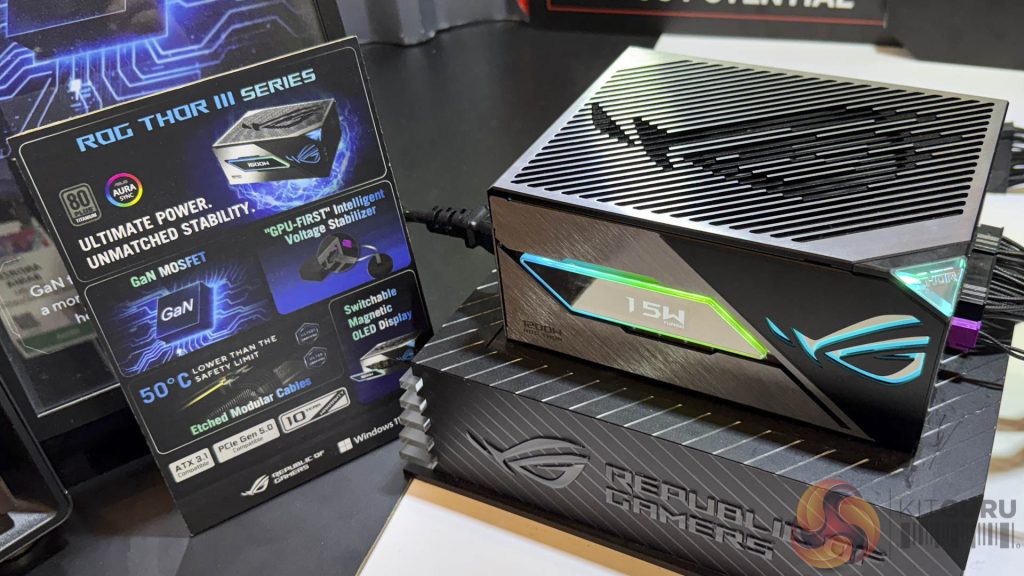
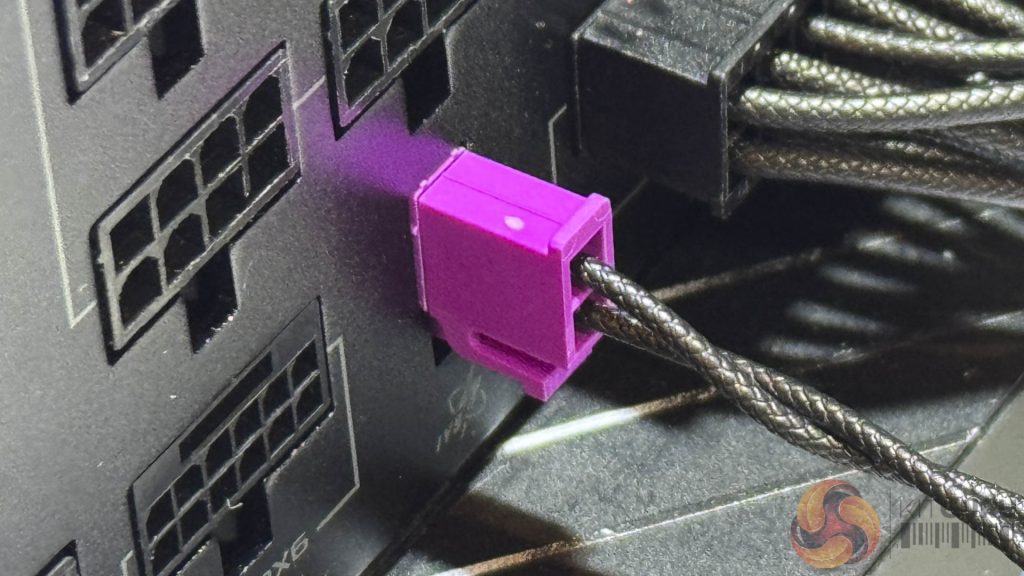
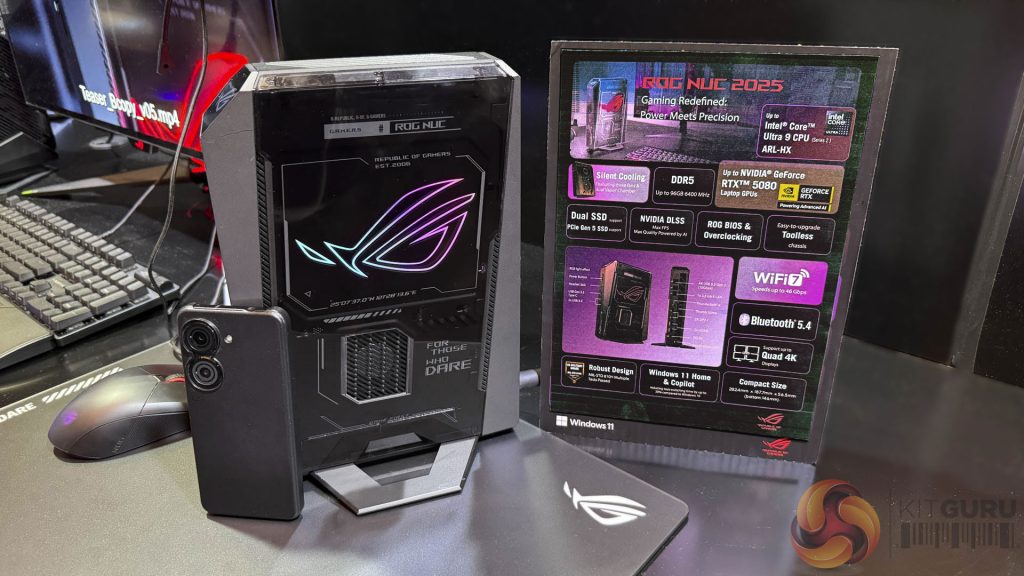
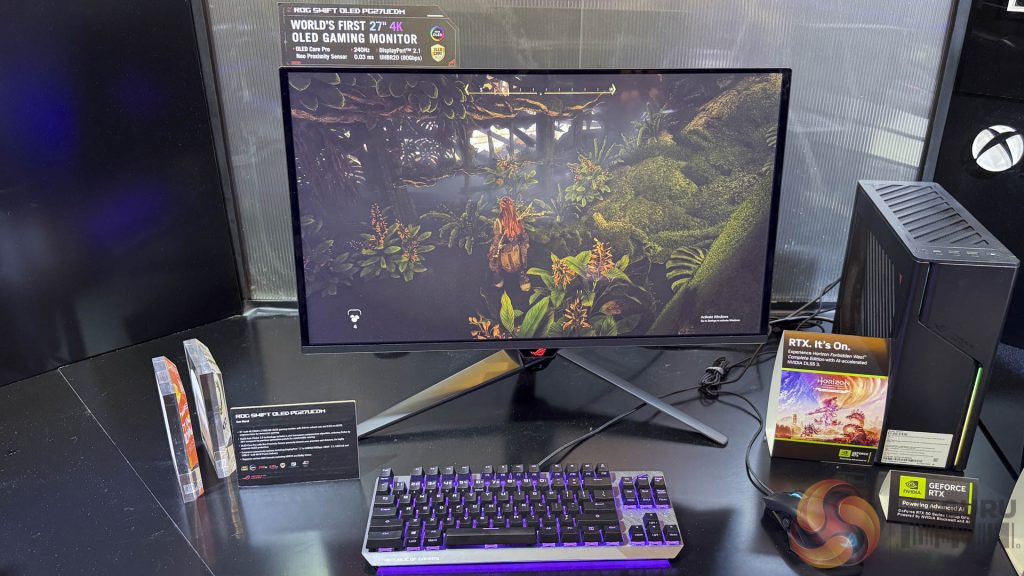
0 comments :
Post a Comment